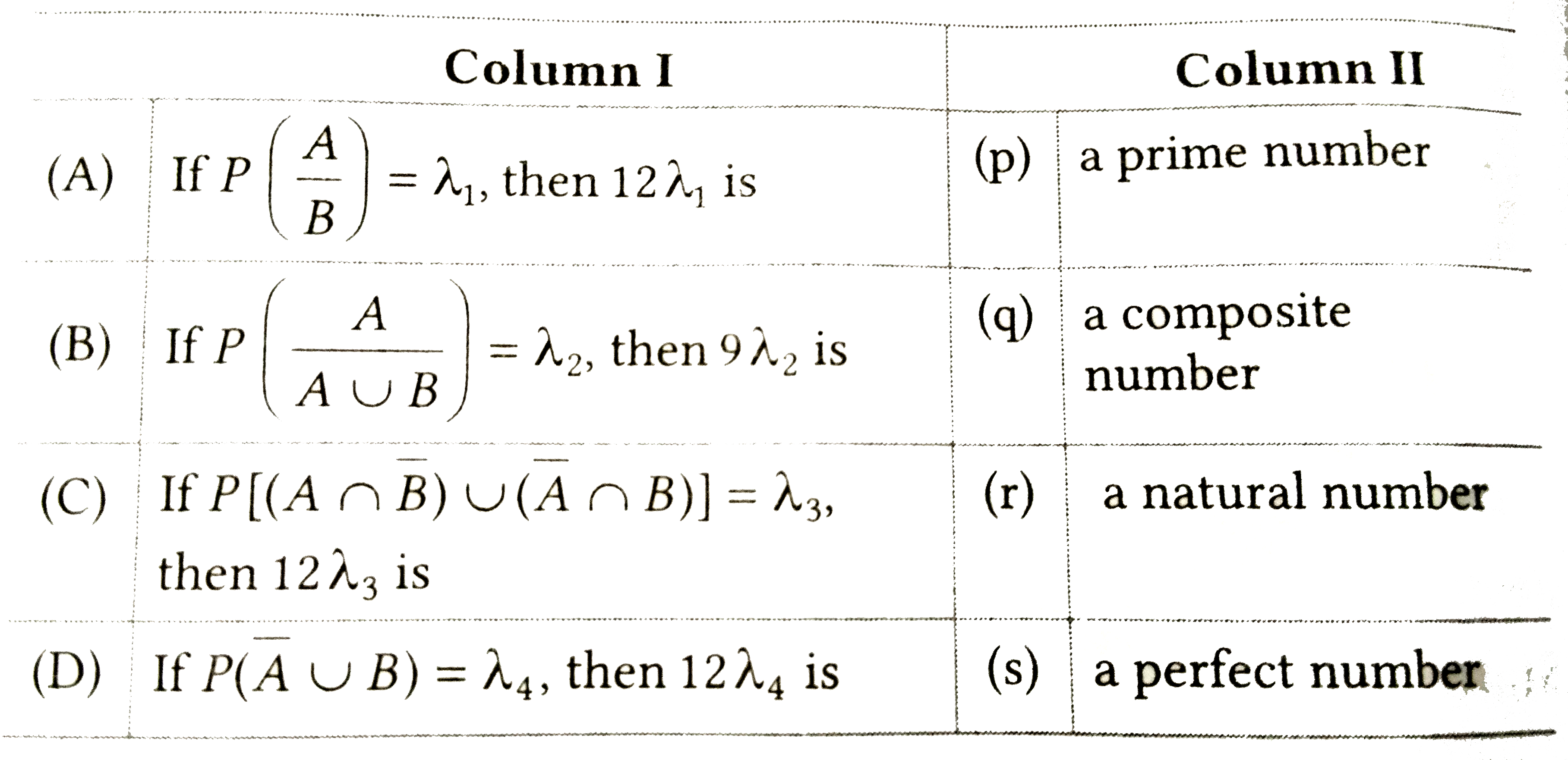If E and F are two independent events and P(E)=13,P(F)=14, then find P(E∪F).
The correct Answer is:N/a
To find the probability of the union of two independent events E and F, we can use the formula:
P(E∪F)=P(E)+P(F)−P(E∩F)
Given:
- P(E)=13
- P(F)=14
Since E and F are independent events, the probability of their intersection can be calculated as:
P(E∩F)=P(E)×P(F)
Now, let's calculate P(E∩F):
P(E∩F)=P(E)×P(F)=13×14=112
Next, we substitute the values into the union formula:
P(E∪F)=P(E)+P(F)−P(E∩F)
Substituting the known values:
P(E∪F)=13+14−112
To perform this addition and subtraction, we need a common denominator. The least common multiple of 3, 4, and 12 is 12.
Now, we convert each fraction:
P(E)=13=412
P(F)=14=312
P(E∩F)=112
Now substituting these values back into the equation:
P(E∪F)=412+312−112
Now, combine the fractions:
P(E∪F)=4+3−112=612
Finally, simplify the fraction:
P(E∪F)=12
Thus, the probability of E∪F is:
12
- P(E)=13
- P(F)=14
P(F)=14=312
P(E∩F)=112
Topper's Solved these Questions
- PROBABIILITYBook:NAGEEN PRAKASHAN ENGLISHChapter:PROBABIILITYExercise:Exercise 13 A
Explore 15 Videos
- PROBABIILITYBook:NAGEEN PRAKASHAN ENGLISHChapter:PROBABIILITYExercise:Exercise 13 B
Explore 17 Videos
- MATRICESBook:NAGEEN PRAKASHAN ENGLISHChapter:MATRICESExercise:Miscellaneous Exerice
Explore 15 Videos
- RELATIONS AND FUNCTIONS Book:NAGEEN PRAKASHAN ENGLISHChapter:RELATIONS AND FUNCTIONS Exercise:Miscellaneous Exercise
Explore 19 Videos
Similar Questions
Knowledge Check
If A and B are two independent events with P(A) =13andP(B)=14 , then P(B/A) is equal to
A14B13C34D1
If A and B are two independent events, then P( A and B)=P(A)⋅P(B)
View SolutionIf A and B are two independent events, such that P(A)=13andP(B)=14.

View SolutionIf A and B' are independent events, then P(A'∪B)=1−P(A)P(B').
View SolutionLet A and B are two independent events. Such that P(A)=1/3andP(B)=1/4. Then match the following lists:

View SolutionIf A and B are two independent events such that P(A)=12 and P(B)=15 then which of the following is correct ?
View SolutionIf E and F are independent events such that 0<P(E)<1 and 0<P(F)<1, then (a) EandF are mutually exclusive (b) EandFc (the complement of the event F ) are independent (c) EcandFc are independent (d) P(E/F)+P(Ec/F)=1
View SolutionIf E and F are independent events such that 0<P(E)<1and 0<P(F)<1, then
View Solution

